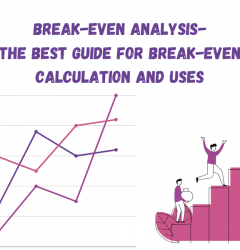15 Sep
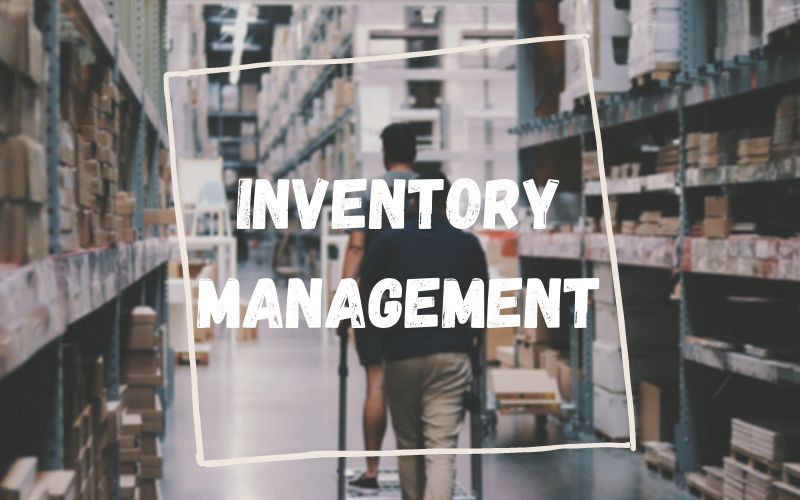
“Yes, of course we have this one for you. Wait five minutes till we grab it from the back.” 5 minutes later, “Sorry, we are out of stock now!” Ever dealt with such a situation? Woo-hoo! Then you are on the right page. We will tell you all about Inventory Management tools and techniques until you feel like a pro!
A business and its inventory brims with many risks. By the way, How is your business going on? Does your warehouse stacks up to the demand? Have you been in losses due to overstock? Or have you lost a good profit when items went out of stock?
Well! Whatever it is afoot now, we will sort it out by discussing further in the article. Today, you will come to know about various inventory management tools and techniques to manage your inventory.
Table of Contents
What is Inventory Management?
Starting from the basics, inventory management is the key part of the supply chain of a business. Good business requires good organization. Like this, a good business game plan requires good Inventory Management. However,, Inventory management tools and techniques are a business requisite. It refers to methods required in managing the stock from its initial stage of production until its delivery.
Inventory management tools and techniques are essential for businesses that involve the trading of goods. It supervises the flow of goods from manufactures to the ultimate point of sale. Withal, it aims to provide the right product at the right place and at the right time.
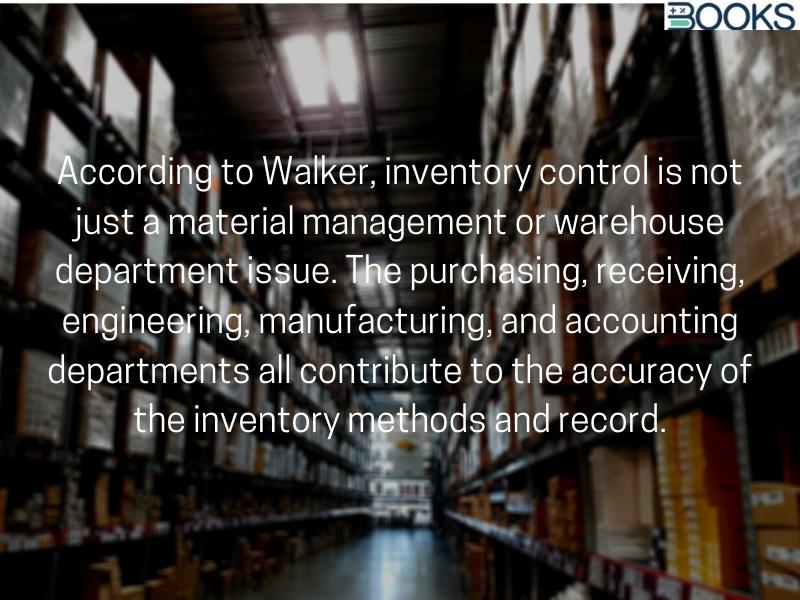
Inventory management tools help to avoid losses by managing the inventory of the firm. The right management aims to provide the right product at the needed time. It foils the products to overstock and obstructs the doors for losses. Besides, it also helps to deter spoilage or go bad of the products. Inventory management tools and techniques ensure that the goods stored are up to the demand. It assures that the product is available as and when needed.
One of the great responsibilities that I have is to manage my assets wisely, so that they create value.
-Alice Walton
Types of Inventory in Inventory Management
Before we proceed further, you must know the basics of inventory. There are many types of inventories that a business firm employs:
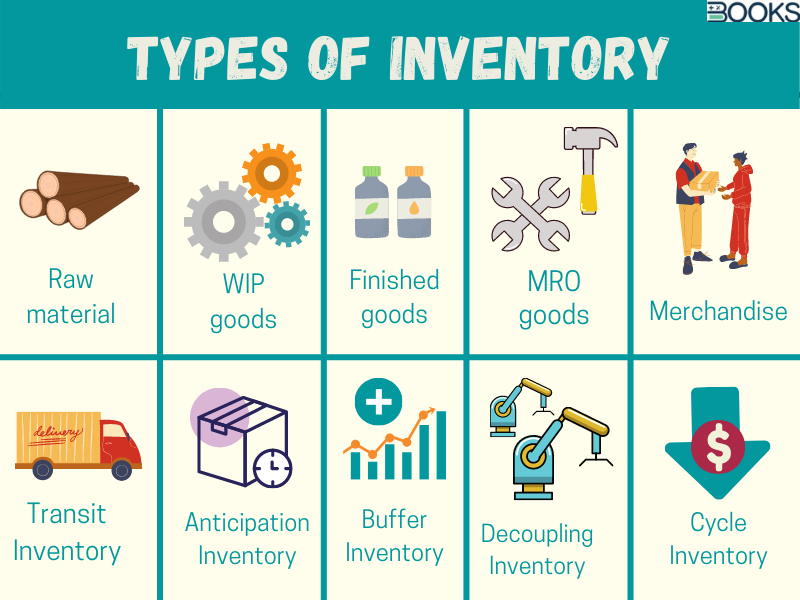
1. Raw Material
Raw materials are the basic materials to produce goods. These are the primary resources a business needs for production. It also refers as a feedstock or unprocessed goods.
2. Work-in-progress goods
The WIP inventories are partially finished or say, semi-finished goods. It involves materials that are still under process, such as raw materials. Yet, it may not mandatorily be the norm. Generally, many other terms also exist under the work-in-progress category. Often such terms appear on the company’s statements and balance sheet likewise. For example, labor and manufacturing overhead expenses.
3. Finished Goods
Finished goods also refer to as ready-for-sale products. These are the goods that a manufacturer sells to the ultimate customers.
4. MRO Goods
MRO is an acronym for Maintenance, Repair, and Operating. These are the inventories that keep the business running. For example, lubricants and repair tools.
5. Merchandise
These are the finished goods that a seller buys from its suppliers for future resale.
6. Transit Inventory
Transit inventories (also pipeline inventories) are the inventories that are on the way to another location. In other words, not yet purchased, but also not at its selling destination. For example, inventory in transit between the supplier and the manufacturer.
7. Anticipation Inventory
A firm is prone to uncertainties of supply and demand as well as unforeseeable events. Consequently, a seller purchases and hold the excess of inventories with him. It is often done in future anticipation of a sudden rise in demand for a specific product. Anticipation Inventories, thus, make sure that you don’t run out of stock when demand rises.
8. Buffer Inventory
Do you remember while you’re surfing online and your internet speed drops? You often say that it’s buffering, Right? Yes, like this firm buffers too! As stated earlier, some stocks protect the firm against uncertainties. Such erratic events often hinder a firm’s operations. So, to protect the firm from buffering, firms store excess inventories as a stock. These inventory cushions also refer to as safety stocks or buffer inventory. It involves safety goods that you keep in reserve for future use. Moreover, these goods help during urgent surges in demand or to meet the shortage of supplies.
9. Decoupling Inventory
As the name says, ‘Decouple’, these are the excess of important parts of the machine. While production continues, there be chances of loopholes created by the machines. So, to meet these sudden damages or loopholes, firms use decoupling inventories. Moreover, it acts as a backup mechanism for the manufacturers. Besides, it aids the system so that the manufacturing process doesn’t slow down in such cases.
10. Cycle Inventory
We all have been studying during schools, that when we order in bulk, the cost of goods decreases. Therefore, the quantity ordered is directly related to the stock holding cost. Yet, it is inversely related to the ordering/setup cost.
To clarify, when we order goods in bulk, the inventory holding cost increases. However, the inventory ordering cost minimizes and vice versa. Therefore, a firm orders excess materials to reach the least production cost. These excess materials, also known as lot-sized, refer to cycle Inventory.
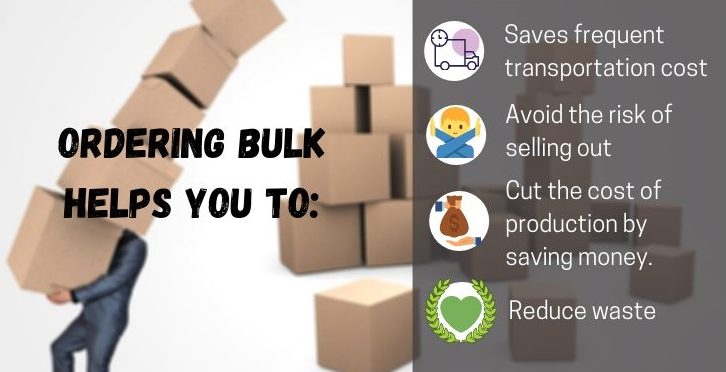
In conclusion, these are the various stocks that are to be managed under inventory management.
How does Inventory Management work?
Inventory management means the right stock, at the right place, and in the right quantity. Inventory software administers the stock of raw materials throughout its production process. It further allows the tracking of each item after loading it to the warehouse.
Moreover, it keeps a record of the goods unless it catches up with the terminal point of sale transaction. Also, it assures the stock quantity and sends a warning whenever the stock falls under the limit.
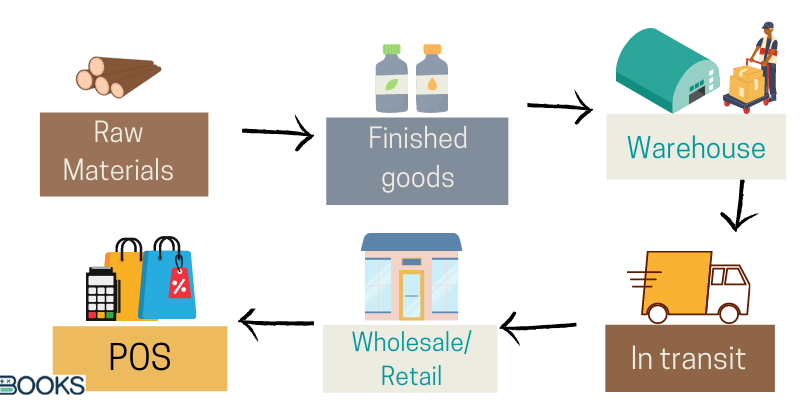
What’s more! It also saves data for the firm’s future reference. Subsequently, it helps to forecast the sales pattern that guides the firm for the bulk needed. Inventory management streamlines through many processes and phases. It records all the changes through POS Software.
What qualities best Inventory Management Software have?
Inventory management need a POS software to work on. Best POS Software compiles various inventory management tools and have the following qualities:
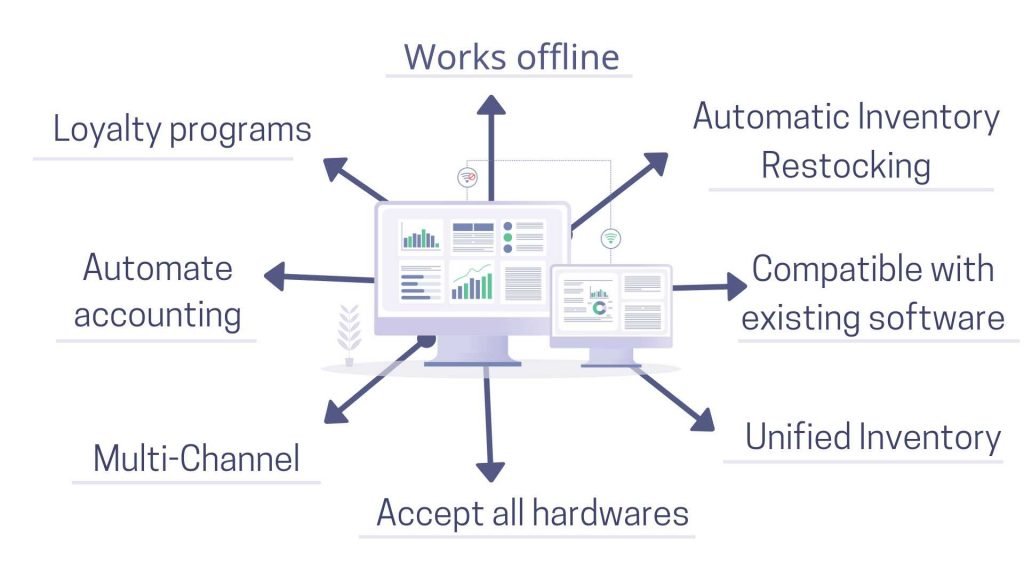
1. Inventory Management Restocking
Your inventory management software should be able to restock. An ideal inventory software automates restock of the inventory, which is soon to run out of stock. You can set the limit of how many of each item you need to have in your inventory. Once your stock falls below the limit, your software detects the shortage. It then places an order with your supplier to restock your low inventory. This feature helps you to always have a required stock in your back in case you don’t lose hands with your customers.
2. Integrate with present software
Your inventory software should be API (Application Programming Interface) friendly. Ideal inventory software is the one that syncs data with your existing software. This feature allows you two software systems to integrate. Above all, it enables you to share information for accounting, payments, shipping, and so on. Compatibility is vital between both the software, as it can prove a huge time-saver.
3. Offers Mobile Access
Never compromise when you have the option of mobile access to your inventory software. Mobile access lets you get the update of your inventory on your mobile as an app. For instance, let’s say, you are running an electronic products shop. One of your employees is at your customer’s house to install or repair any electronic product. He needs a specific part to fix an issue. Then, he can use a mobile app and check whether the item is available in the stock.
4. Works Offline
Never let your operations stop due to internet connection issues. You can continue further operations in an offline mode as well. Best inventory software opt-in to offline mode. It syncs all the data as soon as the internet establishes. This will never let you brood over the internet speed access.
5. Unified Inventory Management
Good inventory management software lets you sync all the stock and orders. It can unify many offline stores. Best inventory management software integrates your e–commerce website and all other marketplaces. This saves your time and inventory recording cost spent on manual work.
6. Accept all Hardware
Inventory Software that works with any of your hardware saves your time and labor. It is like to kill several birds with one stone (Lol; I made this phrase weird). Well, apart from this, it cooperates with all devices and operating systems. This includes Windows, Mac, Chromebook, and so on. Besides, it also supports thermal printers, many barcode scanners, etc.
7. Support Multi-location
Best inventory management software should allow you a single inventory for many channels. You can manage your inventory for many other offline stores and e-commerce marketplaces. This feature reduces your burden of keeping your inventories at all locations.
8. Accounting and Finance
You can rely on your software for keeping your accounting up-to-date. Ideal inventory software deeply integrates with your accounting software and automates the recording. This reduces your manual work. It thereby provides you with accurate and error-free financial statements.
Managing inventory is one of the main customizable parts of doing business. Every business should take advantage of using inventory management software. If you run your business with BooksPOS, inventory management tools are already built-in.
Inventory Management Tools: Usefulness for your business
Inventory management tools aids to keep your internal process optimized and efficient. A proper use of inventory management tool prevents over stock and helps to increase sales supply without losing customers.
The biggest asset to your company is your inventory, therefore, to save costs and make money, you require nurturing that asset into the right direction. Without implementing properly on inventory management tools, you can never succeed.
Inventory Management Tools and Techniques
Besides the system you use, it is very important to focus on the inventory management tools and techniques. It will help you improve your inventory management.
1. First-in, First-out
‘First-in First-out’ is an important principle of inventory management. It means your oldest stocks to sell first. You should organize your inventory in such a way that your older stock should be in front. Manage your latest inventories from the back.
FIFO approach will help you protect your goods from expiry or damage. This technique is essential for perishable products. Using this technique, you won’t end up with unsold spoilage or deter. Following FIFO for non-perishable goods is also beneficial. If you continue keeping the oldest stocks at the back, it may damage or expire. To stand out on this principle, you should have an organized warehouse.
2. Set par levels
Make your inventory control easier by setting ‘par levels’ on it. Par levels mean the least quantity of goods that must be on hand. Setting par levels assures you to never run out of stock.
Your inventory management tools or the software you use should warn you when your stock falls short. But always keep in mind that condition changes. So, keep checking over your wares and analyze its selling pattern during the year. The product that doesn’t sell at all over the past 6 months or more, make sure to remove them. If the selling pattern changes, don’t be afraid to adjust your par level up or down.
3. Contingency planning
A lot of problems can surprise you from time to time. These issues can mutilate unprepared businesses. For example:
- Your sales may mount with a sudden raise, and you run out of stock.
- Your warehouse doesn’t have enough space to adapt to your seasonal rise in sales.
- An error in stock computation and it runs low than you expected.
- The manufacturer can’t supply you with the products you need.
- A product that has slow sales covers a major part of your warehouse.
- Your manufacturer discontinues your supplies without warning.
It doesn’t matter what problems arise, what matters is how you deal with it. Such issues appear unknowingly, and it’s up to you how you handle them. Use apt inventory management tools and figure out where the risks are and plan the steps you would take to face such contingencies. How will you react? What steps you would take? What impact it would have on your business? Always remember, solid planning goes way long.
Being properly prepared is one of the biggest assets in business.
-Keeth Smart
4. Regular auditing
Regular auditing is vital for a business. In most cases, you’ll be leaning on software and reports by your warehouse manager to audit the stock. Yet, you must make sure that the stock counts in actual. There are many inventory management tools and ways to do so:
- Physical inventory – A physical inventory is a process of counting your entire stock at the end of the year. But believe me, this process is tedious. This technique should not involve any omission or error. It would be disruptive if any discrepancy leaves out. You couldn’t pinpoint the issue when you look back at an entire year. So, one has to be cautious during the physical inventory method.
- Spot checking – Many companies follow physical inventory but often run into problems. Due to this, they have to spot check throughout the year. Spot checking means checking stock at an instance. It refers to counting a product that you doubt and comparing the quantity to what you actually assume.
- Cycle counting – Many businesses prefer cycle counting over physical inventory. Rather than counting the stock at the end of the year, they prefer cycle counting. You can say each day, or even a month, different products tally on a rotating schedule. In this process, higher-value goods are frequently counted than lower valued ones.
5. Focus on with ABC analysis
Each good values on different grades. Some need more attention and some less. Using ABC analysis, you can categorize the items which need more attention from those that don’t. Here, ABC grades value as:
A – High valued products with a low frequency of sales.
B – Moderate valued products with a moderate frequency of sales, I.e., neither more nor less.
C – Low valued products with a high frequency of sales.
Thus, items in category A need more attention because it profits more, yet its sales are erratic. But items in category C seek less attention. They have low financial effects and the sales are frequent. Items in category B falls between A and B, and need cyclic attention.
6. Dropshipping
Dropshipping is one of the inventory management tools and techniques. In this, the store doesn’t keep the product it actually sells. When the store has to make a sale, they buy that item from a third-party store. Further, they sell it to the customer as and when needed. Rather than keeping that item in their wares, they buy it from another seller when the sale is to happen.
7. Forecasting
Forecasting future sales is one of the inventory management tools and techniques. It is a basic technique and a retailer should be familiar with this. It involves planning and forecasting demand and sales patterns. A seller forecasts future sales patterns based on historical sales data. It’s an estimate of what the seller expects from the buyer to buy in the future. He defines the sales structure that might follow in the future and stocks the item according to it.
8. Just-in-time inventory management
Just-in-time (JIT) inventory management is an ideal technique that some producers use. Here, the producer arranges the supply of raw material as per the production schedule. This technique is a tremendous way to reduce inventory costs. Instead of ordering bulk, companies receive materials only when needed. Thus, it also helps to avoid creating dead stock.
Toyota was the first company to instrument JIT in 1970. It still stands strong amongst the most powerful companies practicing JIT systems.
9. Cross-docking
Cross-docking is an inventory management JIT technique. In this technique, there is little or sometimes almost no storage between deliveries. It takes place in a distribution docking terminal. Here, an inbound vehicle unloads the goods directly into the outbound delivery vehicle. For example, an incoming truck unloads the stock directly into another outgoing truck.

10. Perpetual inventory management
This technique is the most basic and accurate for calculating the stock when it enters. In simple words, perpetual inventory is counting the stocks as soon as it arrives. The stock manager counts the items before warehousing them. Using this method, one can tally the arrived stock to what was being ordered. It involves manual work on a paper or a spreadsheet.
11. Day Sales of Inventory
Day of sales inventory (DSI) also refers to as an average age of inventory. It is the method to calculate the financial ratio of a firm. This shows the average time that a company takes to convert its inventory to sales.

The inventory comprises finished goods and work-in-progress goods. DSI calculates as the average of inventories. It shows the stock turnover ratio of the company. Thereby, time that a firm takes to convert its stock into liquid form. It shows up to how much time the current company’s inventories will last. Generally, a lower DSI is better as it takes a shorter duration of time to clear off the stock. However, average DSI varies from company to company.
The formula for calculating DSI is, DSI = (Average inventory/Cost of goods sold)*365 Days.

12. Materials Requirements Planning
The materials requirement planning (MRP) is one of the crucial inventory management tools and techniques. This technique is sales-forecast-dependent. The seller should have an exact record of sales to enable the planning of inventory needs. Further, they discuss those planning with the suppliers on time.
For example, a television manufacturer uses MRP inventory system. He may ensure that the materials such as fiberglass and cables are in stock as per forecasted demand. Further, assume he proves incapable of planning accurate sales based on forecasted orders. Consequently, it will result in his inability to fulfill orders.
13. Economic Order Quantity
The Economic Order Quantity (EOE) also refer to as the optimum lot size. It refers to the greatest quantity of an item that a seller should buy at one time. This helps to cut the combined annual costs of ordering and storing the inventory.
EOQ calculates based on the following formula –
The square root of [(2*annual demand in units * the incremental cost to process an order)/the incremental annual cost to carry one unit in inventory] = EOQ.

Or you can simply use our free and ready-to-use EOQ calculator. Use our EOQ Calculator to calculate your optimal level of inventory required.
14. Use cloud-based inventory management software
Look for inventory software that offers you cloud-based solutions with real-time support. BooksPOS’s software connects to your inventory management software. It helps you get real-time sales and business metrics. It also identifies key inventory and keeps you updated with daily stock reports.
Productivity through Effective Inventory Management
An efficient inventory management system converts your raw materials into finished goods. This is possible only with the help of labor and machine. The main aim of manufacturers is to earn more profit. Thus, he focuses on producing quality goods minimizing the cost. This ultimately leads to an increase in the demand for manufacturing resources viz. man, machine, money, and materials. These resources occupy almost 50% of the total cost. This is why inventory management proves significant in business.
You must take effective measures to ease inventory management. Thereby, increasing the productivity of goods. The measures comprise,
- close stock control,
- checking to deter and wastage,
- using the best inventory management software, and
- implying efficient techniques to cut down the cost.
Thus, it helps to lower the cost and also contributes to productivity and profit.
BooksPOS for your Inventory Management-
Single Retail POS system for your Entire Business.
About us
Our BooksPOS system will prove the best inventory management software for your business. It offers you cloud-based ERP and POS inventory software for retail. In addition to this, our software syncs inventories and orders across all marketplaces. It can be your brick and mortar stores, e-commerce websites, and marketplaces. Over and above that, it adjusts your inventory whenever a sale happens.
Our system is easy-to-use and affordable as well. It allows you to manage all your operations in central, could-based software. Moreover, it provides you with semi-integrated secured P2PE (point-to-point encryption) payment options. BooksPOS offers you to run all your franchise stores seamlessly from any location.
BooksPOS is a fully integrate and compatible solution for your retail. No matter how big or small your business is, our system is compatible and has a solution to fit. It easily stands on your needs to the best above all.
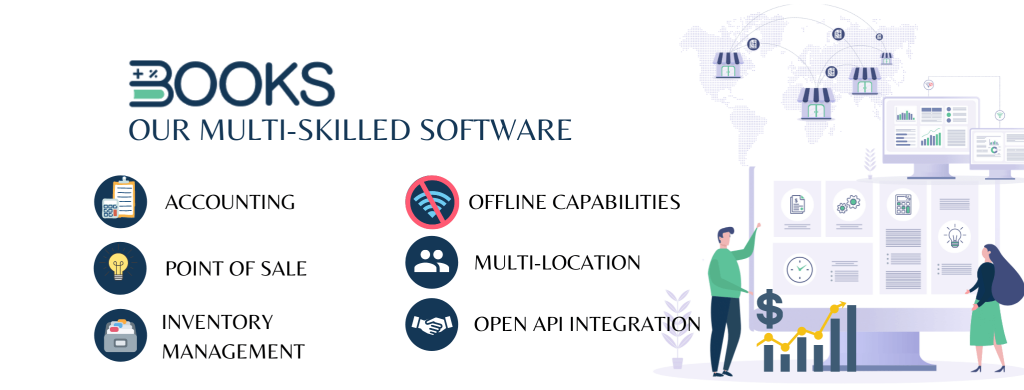
Features BooksPOS offers
Our retail POS system offers you many beneficial features:
1. Unified Inventory
BooksPOS lets you sync your inventory and orders. It unifies inventory from across many marketplaces. It includes offline retailers as well as e-commerce websites. Certainly, it helps save your time spent on manual work.
2. Franchise Management
You can manage your franchise stores and bill them on MRP discounts or allow revenue sharing. Also, track your brand profitability in real-time on the sales at your stores.
3. Works Offline
BooksPOS never disappoints its customers when it comes to their fluency of work. You can continue your operations even when there is no internet. Our systems opt-in to offline mode and syncs data whenever the internet establishes.
4. Customer Loyalty
Compel your customer to return back to your shops. Our software allows you to give redeemable loyalty points for shopping at your store. You can also create schemes for customers’ monthly shopping and visits.
5. Finance and Accounting
Save up to 50% of your time while we process your accounting which involves both sales and purchases. You won’t need any extra accounting software with our software. We manage to generate tax reports and financial statements. BooksPOS manages your accounting and creates compliant journal entries automatically. It also generates automated delivery challans. You don’t have to worry about any inaccuracy or omission. Here, everything operates electronically, so there’s no chance of human error.
6. Integrations
Our inventory software is API friendly to the hilt. It integrates with your existing software for accounting, payments, shipping, and inventory management. It proves compatible with any existing software you have and syncs data with ease.
BooksPOS care for our customers and provide 24*7 continuity support. We have trained our team to reach out to you at any hour of the day. Further, help you build the features you need in your system.
BooksPOS Awards
BooksPOS, the best inventory management software with the most efficient inventory management tools gave its users a great working experience. Finances Online awards our software under the titles,
- The Great User Experience Award, 2020
- Rising Star Award, 2020
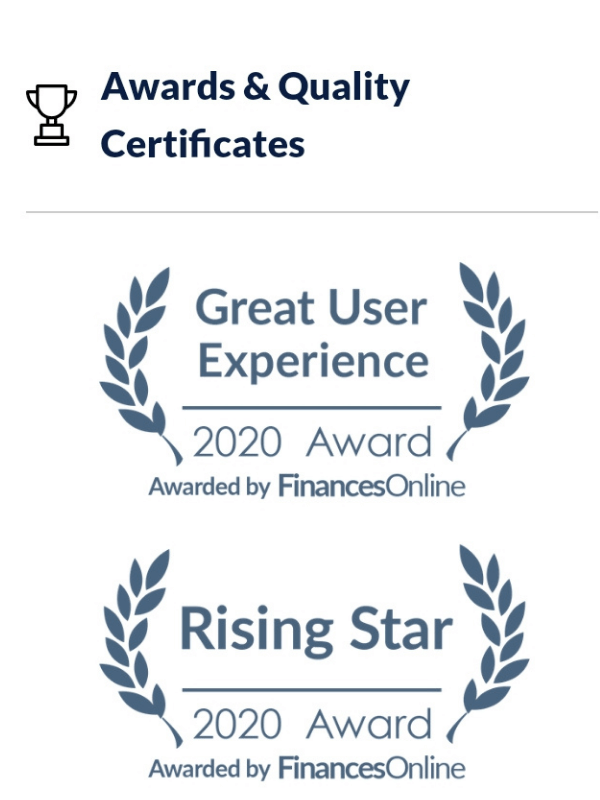
How to manage inventory in the BooksPOS?
BooksPOS’s cloud-based inventory software provides you the inventory management tools to track the items, and so on. Our software identifies key inventory at an instant. It keeps you updated about your accounting metrics with daily reports. You can also keep your financial statements up-to-date using our software.
We offer a deeply integrated payment system. It enables payment to direct enter you’re your accounting software. Withal, we provide you with a single inventory for all your channels. You can use your single stock over many platforms. It can be your brick-and-mortar stores and several e-commerce websites.
How to create stock in BooksPOS?
Our system offers you easy access to create stock. To create stock in your inventory,
- Visit Inventory in your Dashboard.
- Go to Stock Item.
- You can see the Create Stock Item option.
- Select an Item.
- Upload the details (SKU, tax sale, tax purchase, stock brand, etc.)
- Tap Submit.
Once you complete these steps, you can easily order that stock item from your suppliers.
How to buy a stock item using BooksPOS?
To order stock items via BooksPOS,
- Open the POS option and visit Purchase on your Dashboard.
- Select Purchase Voucher Type
- Select your Supplier.
- Choose product
- Finally, Save it.
After that, your order automatically places with your supplier. Further, you can also track the order through the stock summary report.
You can learn more about inventory management tools by our experts who will help you 24*7. Write to us now!
Inventory Management success story
WALMART

Wal-Mart is an American multinational retail corporation. It operates a chain of department and grocery stores. The company was founded by Sam Walton in 1962 and incorporated on October 31st, 1969. Starting with a single store in Rogers in 1962, Wal-Mart has now become the world’s largest retailer.
Have you ever thought about what inventory management tools they used to manage an inventory of such a gigantic business?
Inventory Management tools and techniques used
Wal-Mart’s success ratio lies in its large scale of operation. Aiming to meet the enormous demand, Walmart has implemented a Perpetual Inventory System. It enables a continuous balance of inventory. Moreover, it ensures that the stock is enough to keep customers satisfied.
System used
Other types of technologies used by Walmart include POS Systems. This system helps to track goods throughout the supply chain. Further, it ultimately helps Walmart to get the right product into the right store at the right time.
Along with the perpetual system, Walmart conducts periodic physical inventory counts. Mostly, it happens at the end of their fiscal year to ensure the accuracy of its Perpetual Inventory records. The goal for the physical count is to determine,
- The stock in hand to that of the balance sheet at the end of the year
- The cost of goods sold for the period
- The goods lost due to wasted or dead stocks.
Walmart’s efficiency is also measured with the integrated information system. Hence, Walmart keeps track of its inventory using a perpetual inventory management tools and techniques. Besides, it aids with a powerful POS system and other devices.
If we work together, we’ll lower the cost for everyone. We’ll give the world an opportunity to see what it’s like to save and have a better life.
Sam Walton
Therefore, effective techniques and logistics are the key factors for Wal-Mart’s success.
FAQs
Q1. Do we need a stock manager for inventory management? Or software and techniques are enough?
Managing inventory without a stock manager is like exercising in futility. It’s vain of your inventory management! Managing wares is a work of responsibility. You need a dedicated and responsible stock manager for your inventory management.
Software is an efficient source to minimize your burden and manual work. Yet, that doesn’t mean that it is solely responsible for your inventory management. To make your techniques profitable, you will need a stock manager.
Q2. Is Inventory management tools built-in software expensive?
Not necessarily all software is expensive. Some might cost you like a thousand dollars or even more. But our BooksPOS software is affordable for all scales of business. We offer our software, keeping in mind the customers’ budget and scale of business.
Q3. Cannot we use spreadsheets for inventory management?
Managing stocks with spreadsheets is time-consuming and requires the pain of manual work. Also, spreadsheets can’t track your inventory or connect with your POS. Moreover, you cannot see how your products are selling. So, spreadsheets are not a good way for managing your inventory. You can try our BooksPOS inventory software that offers you cloud-based solutions. It will help you save your time and labor spent on spreadsheets.
Q4. Does BooksPOS allow multi-channel integration?
Yes, we offer deeply integrated POS software. It allows you to unify inventory from all across your working platforms. It may be offline and e-commerce marketplaces.
Need more help in choosing the best inventory management software? Try our BooksPOS free demo now or call us at +918076157787.


